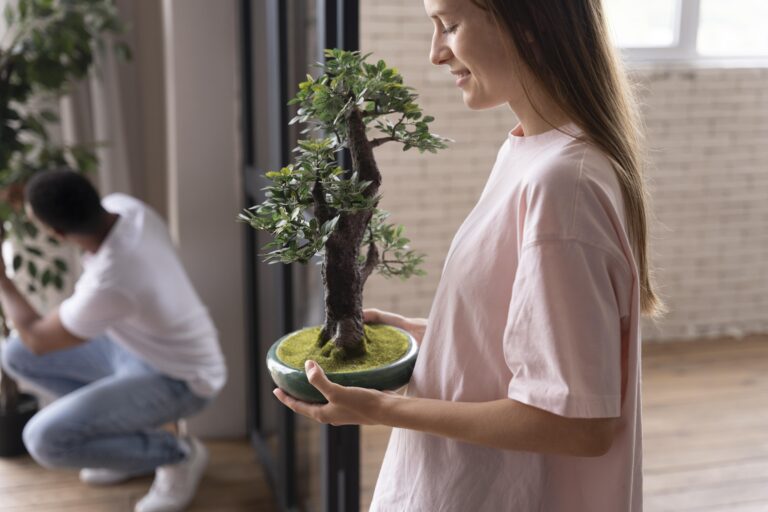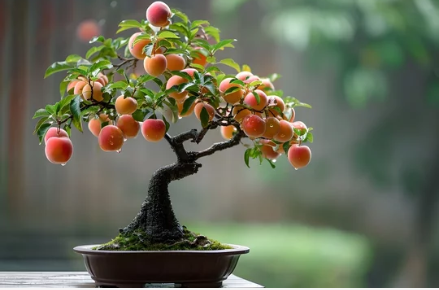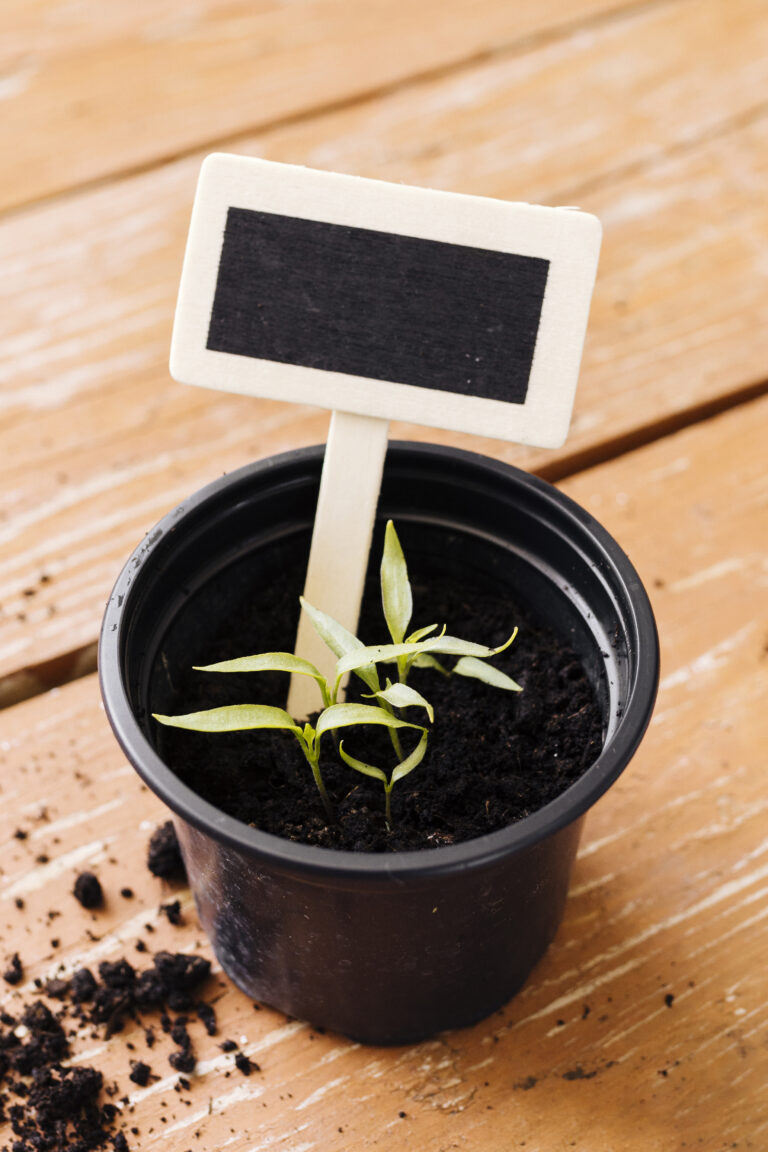Why and When Bonsai Trees Turn Brown?
Bonsai trees are a captivating blend of art and nature, requiring a delicate balance of care and attention. However, even the most meticulously cared-for bonsai can sometimes show signs of distress, one of the most common being the browning of leaves. When bonsai trees turn brown, it is often a clear signal that something is amiss in their care. This article explores the various reasons why bonsai trees turn brown, when this browning might occur, and how to address and prevent it.
Understanding the Browning of Bonsai Trees
Browning in bonsai trees is usually a symptom rather than a disease in itself. It can affect different parts of the tree, including the leaves, branches, or trunk, and can indicate various underlying issues. The reasons why bonsai trees turn brown can be environmental, related to care practices, or due to pests and diseases.
Common Reasons Why Bonsai Trees Turn Brown
a. Watering Issues
Watering is one of the most critical aspects of bonsai care. Both overwatering and underwatering can lead to browning.
- Overwatering: When a bonsai tree is overwatered, its roots can become waterlogged and deprived of oxygen. This can lead to root rot, a condition where the roots decay and can no longer absorb water and nutrients effectively. As a result, the leaves may turn brown and eventually fall off.
- Underwatering: Conversely, underwatering deprives the bonsai of the moisture it needs to thrive. If the soil becomes too dry, the tree cannot take up enough water, leading to dehydration. This stress often manifests in the browning of leaves, particularly at the edges or tips.

b. Lighting Issues
Bonsai trees require adequate light to photosynthesize and stay healthy. The amount of light needed can vary depending on the species, but insufficient light can cause significant stress.
- Insufficient Light: If a bonsai tree is not receiving enough light, it may become weak and unable to produce the energy it needs to grow. Over time, the leaves may turn brown and fall off, indicating that the tree is struggling to survive.
- Excessive Direct Sunlight: While some bonsai species thrive in bright light, too much direct sunlight can cause the leaves to scorch, leading to browning. This is particularly common in species that prefer partial shade.
c. Nutrient Deficiencies
Bonsai trees, like all plants, require a balanced supply of nutrients to maintain their health. A deficiency in essential nutrients can lead to bonsai trees turn brown.
- Nitrogen Deficiency: Nitrogen is vital for leaf growth and overall plant health. A deficiency can cause the leaves to turn yellow or brown and drop prematurely.
- Potassium Deficiency: Potassium helps with water regulation and enzyme activation in plants. A lack of potassium can lead to browning at the leaf margins and tips.
d. Improper Soil and Root Conditions
The soil in which a bonsai is planted plays a significant role in its overall health. Improper soil conditions can lead to root problems, which often manifest as browning.
- Compacted Soil: If the soil becomes compacted, it can restrict root growth and reduce the availability of oxygen to the roots. This can cause the tree to weaken, leading to browning of the leaves.
- Root Bound: Bonsai trees are typically grown in small pots, and if the roots outgrow the pot, they can become root-bound. This restricts the tree’s ability to absorb water and nutrients, leading to browning.
e. Pests and Diseases
Pests and diseases are another common cause of bonsai trees turn brown. These can range from fungal infections to insect infestations.
- Fungal Infections: Certain fungi can infect bonsai trees, leading to browning and wilting of the leaves. For example, root rot caused by overwatering can be exacerbated by fungal pathogens.
- Insect Infestations: Pests such as aphids, spider mites, and scale insects can cause significant damage to bonsai trees. These insects feed on the tree’s sap, weakening it and causing the leaves to turn brown and fall off.
f. Temperature and Humidity Fluctuations
Bonsai trees are sensitive to environmental changes, particularly temperature and humidity.
- Cold Damage: Many bonsai species are not tolerant of cold temperatures. If exposed to frost or prolonged cold, the leaves and branches may turn brown and die.
- Heat Stress: High temperatures, especially when combined with low humidity, can cause the leaves to dry out and turn brown.
- Low Humidity: Bonsai trees, particularly tropical species, require a certain level of humidity to thrive. In dry environments, the lack of humidity can cause the leaves to lose moisture and turn brown.
When Bonsai Trees Are Most Prone to Browning
Browning can occur at various times throughout the year, depending on the cause.
a. Seasonal Changes
- Autumn: Deciduous bonsai trees naturally turn brown and lose their leaves in the autumn as part of their life cycle. This is not a cause for concern but a normal process.
- Winter: Bonsai trees that are not properly protected from the cold during winter may experience browning due to frost damage or dormancy stress.
b. After Transplanting or Repotting
Bonsai trees are often transplanted or repotted to manage root growth and soil conditions. However, this process can be stressful for the tree.
- Transplant Shock: After repotting, a bonsai may experience transplant shock, which can lead to browning of the leaves as the tree adjusts to its new environment.
c. During Periods of Stress
- Drought or Watering Inconsistencies: Periods of inconsistent watering, either too much or too little, can lead to browning. It is important to maintain a regular watering schedule, particularly during hot or dry periods.
- Nutrient Deficiencies: If a bonsai is not fertilized regularly, it may develop nutrient deficiencies that lead to browning over time.
How to Address and Prevent Browning in Bonsai Trees
Once browning occurs, it is important to identify the underlying cause and take appropriate action. Here are some steps to address and prevent browning in bonsai trees:
a. Adjust Watering Practices
- Monitor Soil Moisture: Regularly check the soil moisture by inserting a finger about an inch into the soil. If it feels dry, it’s time to water. Be careful not to overwater, especially during cooler months when the tree’s water needs are reduced.
- Improve Drainage: Ensure that the bonsai pot has adequate drainage holes to prevent waterlogging. You may also consider using a well-draining soil mix designed for bonsai trees.
b. Optimize Light Conditions
- Provide Adequate Light: Place your bonsai in a location where it can receive the appropriate amount of light for its species. For indoor bonsai, consider using grow lights if natural light is insufficient.
- Protect from Excessive Sunlight: If your bonsai is outdoors, monitor its exposure to direct sunlight, especially during the hottest part of the day. You may need to provide shade to prevent leaf scorching.
c. Fertilize Regularly
- Use Balanced Fertilizers: Regularly feed your bonsai with a balanced fertilizer that provides essential nutrients. Follow the recommended dosage to avoid over-fertilizing, which can also cause browning.
- Address Specific Deficiencies: If you suspect a nutrient deficiency, use a fertilizer that targets the specific nutrient lacking, such as a nitrogen-rich fertilizer for yellowing leaves.
d. Check and Maintain Soil Quality
- Repot When Necessary: Repot your bonsai every 2-3 years, or as needed, to refresh the soil and allow for healthy root growth. Choose a soil mix appropriate for your bonsai species.
- Avoid Compaction: Ensure the soil remains loose and well-aerated to allow the roots to breathe. If the soil becomes compacted, consider aerating it or repotting the tree.
e. Manage Pests and Diseases
- Regular Inspection: Regularly inspect your bonsai for signs of pests or diseases. Early detection is key to preventing serious damage.
- Use Pesticides and Fungicides: If pests or fungal infections are present, treat the bonsai with appropriate pesticides or fungicides. Always follow the manufacturer’s instructions to avoid harming the tree.
f. Control Environmental Conditions
- Protect from Extreme Temperatures: During winter, protect your bonsai from frost by bringing it indoors or using frost cloths. In summer, ensure it is not exposed to extreme heat.
- Maintain Humidity: For indoor bonsai, use a humidity tray or mist the leaves regularly to maintain an appropriate level of humidity.
Conclusion: why and when do bonsai trees turn brown?
Bonsai trees turn brown is a common issue that can be caused by various factors, including improper watering, insufficient light, nutrient deficiencies, poor soil conditions, pests, and environmental stress. By understanding the reasons why bonsai trees turn brown and when this is likely to happen, you can take proactive steps to prevent and address the issue. Regular monitoring, proper care, and timely interventions are key to maintaining the health and beauty of your bonsai tree, ensuring it thrives for years to come.
FAQ: Bonsai Trees Turn Brown
1. Why are my bonsai tree’s leaves turning brown?
Browning leaves on a bonsai tree can result from various issues, including improper watering (either too much or too little), insufficient or excessive light, nutrient deficiencies, compacted or poor soil, pest infestations, or environmental stress such as extreme temperatures or low humidity.
2. How can I tell if my bonsai tree is overwatered?
Signs of overwatering include consistently wet soil, yellowing leaves that eventually turn brown, and a mushy or decaying root system. Overwatering can lead to root rot, which prevents the roots from absorbing water and nutrients effectively.
3. What should I do if I suspect my bonsai is underwatered?
If your bonsai is underwatered, the soil will be dry to the touch, and the leaves may become crispy and brown, especially at the edges. To remedy this, water the tree thoroughly until water drains from the bottom of the pot. Make sure to establish a consistent watering schedule.
4. Can too much sunlight cause my bonsai trees turn brown?
Yes, excessive direct sunlight can scorch the leaves of a bonsai tree, leading to browning. This is particularly true for species that prefer partial shade. If you notice browning due to sunlight, move the tree to a location where it receives filtered or indirect light during the hottest part of the day.
5. How do I know if my bonsai has a nutrient deficiency?
Nutrient deficiencies in bonsai trees can cause various symptoms. For example, a nitrogen deficiency may result in yellowing or browning leaves, while potassium deficiency often leads to browning at the leaf edges. Regular fertilization with a balanced fertilizer can help prevent these issues.
6. What should I do if pests are causing my bonsai to turn brown?
Inspect your bonsai regularly for signs of pests such as aphids, spider mites, or scale insects. If you detect an infestation, treat the tree with an appropriate pesticide or insecticidal soap. Be sure to follow the instructions carefully to avoid harming the tree.
7. Can environmental factors cause browning in bonsai trees?
Yes, environmental factors such as extreme temperatures, frost, low humidity, and sudden changes in light or temperature can stress a bonsai tree and lead to browning. Protect your bonsai from harsh conditions by providing adequate shelter, maintaining consistent humidity levels, and adjusting its environment as needed.
8. Is it normal for bonsai trees to turn brown in autumn?
For deciduous bonsai species, it is normal for the leaves to turn brown and fall off in autumn as part of the natural seasonal cycle. This is not a cause for concern and indicates the tree is entering its dormant phase.
9. How can I prevent my bonsai tree from turning brown after repotting?
After repotting, your bonsai may experience transplant shock, leading to temporary browning. To minimize this, ensure the tree is repotted during the appropriate season (usually spring), use fresh, well-draining soil, and water the tree adequately without overwatering. Allow the tree time to adjust to its new environment.
10. What can I do to revive a bonsai tree that has turned brown?
Bonsai trees turn brown can be revive by, first identify and address the underlying cause, such as adjusting watering practices, improving light conditions, treating pests, or correcting nutrient deficiencies. Prune any dead or severely damaged leaves and branches to encourage new growth. With proper care, the tree may recover over time.






